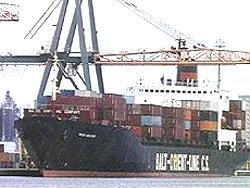China's Demand for Logs Expected to Decline in Next Decade
Boston, MA, June 25, 2018--Over the past five years, China’s imports of softwood and hardwood logs jumped by 42%, while imports of lumber soared 81%, but the country’s role as the driver of global timber demand is set to fundamentally change over the next decade, said RISI, a source of market intelligence for the global forest products industry in a mid-December 2017 report. Imports of hardwood and softwood logs could decline by 15% or more while import growth in lumber slows sharply-two of the dramatic shifts predicted by the latest China Timber Supply Outlook from RISI.
“China’s forest industry, and their demand for imported wood fiber, is entering a new stage,” said Bob Flynn, RISI director for International Timber and lead author of the China Timber Supply Outlook. “Changes in government policies, highlighted at China’s 19th National Congress in October, will have a direct impact on the industries that drive demand for logs and lumber. Lumber imports will keep growing, but at a much slower rate, and log imports are set to decline – which is almost unprecedented.” Flynn said.
“The central government is moving aggressively to reduce financial risk and pollution. This will slow both the building construction sector and the factories that make wood products – two industries that have sustained massive wood fiber demand growth in recent years,” explained Flynn.
China is the world’s largest importer of wood fiber, and is also its largest exporter of plywood, flooring, wooden furniture, and other related products. While rising labor costs and other factors have been potential drags on growth, 2017 still saw record-high imports of logs and lumber. In coming years, the shifts in Chinese demand will be felt by timber exporters worldwide, from Australia to the US to Europe.
“Total Chinese demand for wood fiber imports will continue to grow,” said Flynn. “but most of the growth will be for the pulp and paper sector. Changes will be driven not just by Chinese demand, but available supply of logs, lumber and woodchips in the exporting countries, as well as competitive demand in other markets, such as lumber in the USA or logs in India.”
